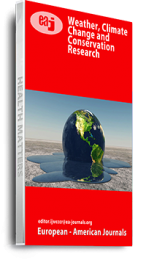The global challenge of Climate change poses a significant threat to humanity, with its impacts already being felt in various parts of the world through unpredictable and severe weather events leading to property damage and loss of life (IPCC, 2014). Community resilience is vital in reducing the losses caused by climate change, and it depends on an understanding of perceived risks, vulnerabilities, and local efforts to mitigate them. The Chittagong Hill Tracts of Bangladesh is one of the regions that is particularly vulnerable to climate change, due to its geography, degradation of forests, sensitivity of livelihoods, and low capacity in comparison to other parts of the country (World bank 2018).Although vulnerability assessments to climate change have been conducted previously, there remains a gap in involving indigenous communities residing in hilly areas of Bangladesh. The recognition of climate change risks as perceived by local communities could serve as a foundation for developing locally-led adaptation plans aimed at building local resilience.The Basonto Mon watershed is located in Rangamati district of Bangladesh, with GPS coordinates of 22˚ 40.218″N 92˚ 16.620″ E (GPS coordinates derived from Google Earth) and an elevation of 390 feet above sea level. The area comprises of five villages from varying elevations and is primarily inhabited by the Chakma community. There are 269 households in the region, primarily relying on Jhum cultivation, agriculture on fringe lands, and seasonal labor for their livelihoods, with an average annual household income of BDT 96000 (approximately US$ 1132). About 76% of the community consider themselves under serious threat from the effects of climate change, while 24% have limited understanding of the issue. Approximately 20% of the respondents believe that their livelihoods will be mostly affected by climate change, while 78% identified multiple impacts including health, disaster intensity, family workload, and more. The region is also facing severe soil erosion caused by deforestation, incorrect agricultural practices, and the monoculture of forest species such as teak. The community is at risk from agricultural drought, flash floods, landslides, cyclones, among other things, with the most impacted months being March to August.Climate drivers in the area include erratic rainfall, sudden heavy downpours, increased number of rainless days, and rising temperatures. Acute water scarcity caused by the drying of streams is another major concern for the community and has a widespread impact on women and their families. The most vulnerable sectors identified are the forest and ecosystem, livelihoods, and water security.Approximately 75% of the population is literate and has access to educational institutions and health clinics. However, the environment is fragile. To address this, there are three main priorities: 1) preserving the forests through cooperative efforts, reforestation, and public education, 2) promoting sustainable and climate-resistant agriculture, as well as alternative livelihoods and market access, and 3) improving access to clean water and preserving water sources through community-led management. Key stakeholders, such as the CHT institutions and local government bodies, are crucial in supporting the community in becoming more resilient to the effects of climate change.
Citation: Rahman A K M A., and Rahman M O. (2023) Community Climate Vulnerability Assessment (CCVA) to Climate Change of a Hilly Area of Rangamati District in Bangladesh, International Journal of Weather, Climate Change and Conservation Research, Vol. 9 No. 1, pp.15-35
Keywords: Climate Change, Ecosystem, Vulnerability, Watershed, climate resilience

